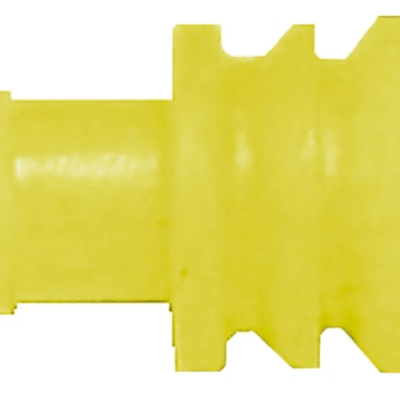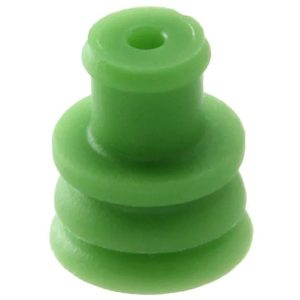281934-2
Part Number: 281934-2
Manufacturer: TE Connectivity
Description: Automotive Connectors SINGLE WIRE SEAL
Shipped from: Shenzhen/HK Warehouse
Stock Available: Check with us
ICRFQ.com - Electronic Components Distributor in China Since 2003

Part Number: 281934-2
Manufacturer: TE Connectivity
Description: Automotive Connectors SINGLE WIRE SEAL
Shipped from: Shenzhen/HK Warehouse
Stock Available: Check with us
| Datasheet | |
|---|---|
| Category | Connectors, Interconnects |
| Family | Rectangular Connectors – Accessories |
| Manufacturer | TE-Connectivity-AMP-Connectors |
| Series | Superseal |
| Accessory Type | Seal |
| Number of Positions | 1 |
| For Use With/Related Products | – |
| Features | – |
To fulfill the ever-increasing needs and requirements for safety and dependability in the field of electrical connection, the 281934-2 connector standard was developed. These connections satisfy the requirements outlined in the numerous automotive and industrial standards. Typical applications include a wide variety of automobile sensor devices, oil pressure senders, water temperature monitoring, and any other application that requires waterproof protection to IP67 standards.

To help the reader and user grasp common phrasing, give some technical background, and boost your curiosity about this fascinating world of connection systems, we would like to share some basic facts that we have collected about Connection Systems in the following. Connection systems and related issues are fundamental science at their very best. Therefore, we will try our best to provide you with the most beneficial and uncomplicated introduction possible to the fundamental components, their respective wordings, and their functions.
In the electrical industry, connectors are often used to join or separate wires. They facilitate the attachment and detachment of prefabricated devices and components from the specified wiring harness. When two connectors are mated, they form a connecting system. Male terminals/pins on one end, female on the other. Metal stamped terminals are the most common type of terminal made, and they can be found in various shapes and coating options. Terminals (male and female) that securely fit together ensure a reliable electrical connection between the ends. In this case, the connector housing is the insulator.
However, what distinguishes an automotive connection system from a system used in industry or telecommunications?
Unlike in other industries, automotive connection systems must adhere to stringent technical dependability standards defined by Original Equipment Manufacturers (OEMs) like General Motors and Volkswagen. Connection systems need to be connectable and disconnectable in harsh working conditions, including exposure to various environmental factors typical of a vehicle’s interior.
Producers’ primary responsibilities to growing numbers of connection systems per vehicle are to invent systems with extremely high functionality and a zero-percent malfunction rate. This manufacturing standard also applies to pre-owned terminals, which frees up a wide range of niche technological options for this sector.
Connection systems can be broken down into three categories, depending on the nature of the connections being made:
Each end of a male connector is “filled” with terminals, and the female connector is “filled” with a male connector, creating this form of connection. Consequently, you’ll have a connectable harness component. This type of connection is typically used to connect and disconnect a single, low-power application (such as an electronic window raise) from the vehicle’s primary power distribution system or a separate, supplementary power distribution system.
A connection can be permanently fastened to a conductor board using this connection mechanism. The male connector, also known as a “PCB Header,” is often soldered directly to the circuit board. Male connector on connector connects female terminals to electrical harness. Connecting the engine control unit to the power harness is a common example of a Board-to-Wire connection.
This gadget already has the mating component on its whole. Female connectors appropriate for a given application make up most of a device’s mating parts. In most circumstances, it is not possible to purchase assembled male connectors. For most developers, trying and constructing connection mechanisms for testing is quite irritating.
The general components of connection systems, their wordings, and their roles in all connection systems are listed below.
The connector housing carries the pins or terminals. Its form ensures a secure connection with the specified mating part and is constructed of insulating plastic. The design distinguishes between sealed and unsealed connection methods and male and female connections. A radial sealing is typically present in a sealed connection system to shield the electrical system from the effects of water or dirt. The location of this is between the male and female connectors.
Numerous connectors are produced in different codings to prevent incorrect connections. Several notches inside the connector frequently realize a connection’s coding. These coded connectors made by Delphi Connection Systems are straightforward to use, even for those new to the industry. The notches are typically marked with different colors since they are not immediately obvious.
Single Wire Seals enclose the single conductor and protect the cavity from the elements. In a single operation, seals are crimped to the terminal and the cable and placed into each cavity. Depending on the manufacturer and series, a seal comprises two to three sealing disks. The proportion of silicon oil used to preserve the single wire sealing varies according to the manufacturer and series.
The connector housing is primarily built by hand with the terminals. To complete a technical link, each crimped contact must be fully inserted into the connector. The use and various connection mechanisms affect the insertion force. As soon as the terminal is plugged in, you will hear a little “click” on many connection methods. A tiny click sound has been produced to prevent errors during mass production. Assembling terminals eight hours a day requires workers to make mistakes, which must be minimized to the greatest extent possible. If you consider that a worker can only make one mistake every three months, his mistake rate is less than 10 ppm (ppm stands for parts per million).
We’ve covered some background on 281934-2 connectors and other relevant information here. We anticipate that you will find it entertaining and informative. Feel free to ask any questions you may have regarding this article or any other topic on our website in the comment sections below, and we will try our best to answer them.
You’ve come to the right place if you need information or want to buy 281934-2 or any other kind of connector. Get in touch with us at ICRFQ, your go-to distributor of electronic components in China, and let us assist you in finding the best product at the lowest cost.
WhatsApp us